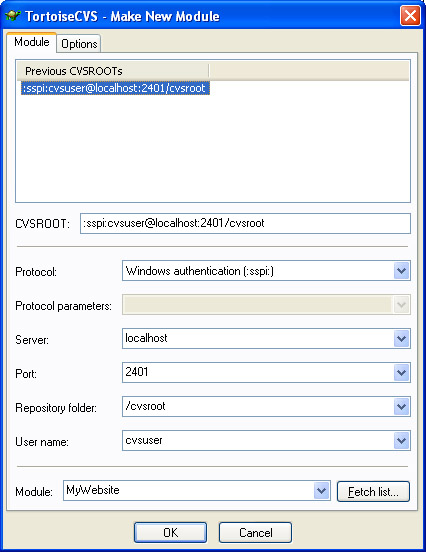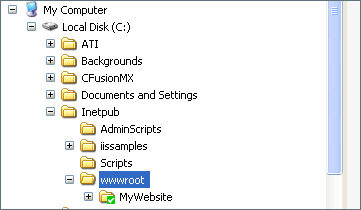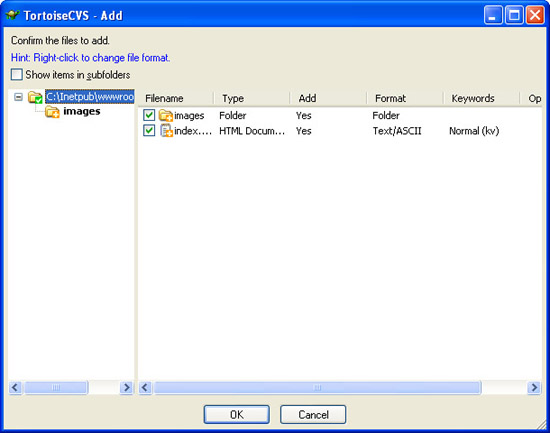How to Set up a Source Control on Windows without spending a dime.
by Jason Clark on December 28, 2004 9:00 PM EST- Posted in
- IT Computing
Tortoise CVS
CVSNT is the server side component of our new source control installation. Now, we need a client interface to allow us to manage our files. Tortoise CVS is an open source version control client that allows you to work with your files in CVS/CVSNT. Tortoise CVS integrates into Windows Explorer and makes managing your files incredibly easy. Tortoise CVS works in Windows 95, 98, ME, NT, 2000, 2003 and XP.Installing Tortoise CVS
To install Tortoise CVS, navigate to this link and download the latest build. After the download is complete, install the software, and accept the defaults throughout the install process. Once the install is complete, Tortoise will require a reboot because it has to integrate into your Windows Explorer shell interface.Creating your first "Module"
CVS organizes files into "Modules". Modules are top level containers for your files - think of them as the projects that you want CVSNT to manage. For example, we're working on a project called MyWebSite and we want to check that project into CVSNT. We first navigate to the top folder that contains all of our files; in our case, it's called MyWebSite. Then, we right click on that folder and select "Make new module" under CVS. You will be presented with the screen below.
The "make new module" screen will ask you for connection information for your CVS server. In our case, the CVS server is on our local machine and we are connecting using SSPI with a local windows user. The port is the port number in which we set the Service Control Panel. The Repository folder is the name of the folder that we created when we created the repository. In our case, it was /cvsroot. After you have filled in your connection information, click "ok" and Tortoise will create a new module for you in CVS. After the module has been added, click "ok" in Tortoise. You will notice that the folder that contains your files now has a green box on it.

Adding files to the new Module
Now that we have a module created in CVS, let's add our files to the module. Once the files are added, CVS will now manage any changes, additions, or deletions to the files. To add files, right click on the folder that we added to CVS and choose "CVS Add contents". You should see a window similar to the screen shot below.
| Tortoise will list the files and folders that are in our top level folder. It also lists Type and Format of the files. You can double check that Tortoise detected your file type correctly, although I have yet to see an instance where it did not detect the file type correctly. After your files have been added, click OK. Your files should now look something like the screenshot on the right, with an orange cross box on each file. This indicates that the file has been added, but still needs to be committed to CVS. |  |










34 Comments
View All Comments
NateS - Sunday, April 17, 2005 - link
There's a new SCM/version control software from ionForge called Evolution. It gives you easy, encrypted connectivity for collaborating over the web. It's quick to install and relatively intuitive to use. Single-user licenses are free at the ionForge website and multi-user licenses are $550 per license, which is less than comparable alternatives.NateS - Sunday, April 17, 2005 - link
There's a new SCM/version control software from ionForge called Evolution. It gives you easy, encrypted connectivity for collaborating over the web. It's quick to install and relatively intuitive to use. Single-user licenses are free at the ionForge website and multi-user licenses are $550 per license, which is less than comparable alternatives.DonPMitchell - Wednesday, January 5, 2005 - link
I'd stay away from CVS, its pretty lame old UNIX software from way back. Perforce is the best you can find, used on some huge professional projects. And if you can get a free version for small projects, then that's perfect.jayoung - Tuesday, January 4, 2005 - link
I'm having a tremendous headache setting it up. Here's the error I recieve:Followed the instructions up to the part where you create a new module
and I keep getting the same error.
In C:\DOCUME~1\Joseph\LOCALS~1\Temp\TortoiseCVS make new module temp\:
"C:\Program Files\TortoiseCVS\cvs.exe" "-q" "-x" "import" "-m" ""
"testmod" "tcvs-vendor" "tcvs-release"
CVSROOT=:sspi:Joseph@localhost:2401/cvsroot
cvs [server aborted]: can't create temporary directory
C:\temp\cvstemp/cvs-serv2304: Permission denied
Error, CVS operation failed
Pauli - Tuesday, January 4, 2005 - link
Foxbat121-My company has a very large Clearcase installation (400+ developers) with most clients being Windows machines and we are generally pleased with the features and performance. Of course, the first couple of years were hell. The last 3 or 4 years have been trouble free for the most part. I've been using it daily for more that 5 years now and have never experienced a license server problem.
Foxbat121 - Tuesday, January 4, 2005 - link
My Company spent near a million $$ upgraded to ClearCase a few years back. It's a biggest waste of money and bottle neck on productivity. Yes, it does have extensive administrative tools and features. That's why managers all love ClearCase because they are the ones who don't have to write a single line of code. For software engineers, we have to spend half of the day just to synchronize every one's work. Spend probably one hour to make code changes and spend rest of the day try to deliver that code change to the CC so every one else could get the changes next day. It's slow and buggy as hell.Yes, it does have Windows Explorer integration. However, if the license server is down for whatever reason, your Explorer (and every one else with CC installed) will have 2-minute delay every time you try to bring up the context menu even though you're not using any of the CC features.
Bookie - Monday, January 3, 2005 - link
you can count me in for another vote for Subversion. My company uses VSS and I agree with everyone else, it sucks. I personally use Subversion for my own stuff and I'm working on convincing my company to swtich. I'd like to see Anandtech make the switch and spread the news.neogodless - Thursday, December 30, 2004 - link
I got it to work with NO username after some experimentation, but it didn't match the example in the "tutorial". Thanks for the help, anyway!Jason Clark - Thursday, December 30, 2004 - link
neogodless, if you have difficulties with SSPI, try pserver, it will still auth against the NT user database. SSPI should work though.Cheers
Sokaku - Thursday, December 30, 2004 - link
I've used Source Safe, PVCS, CVS, Subversion & ClearCase.The strongest of these products is without a doubt Rational ClearCase. But as other mentioned, its also by far the most expensive on all fronts (administration, support, hardware, price).
ClearCase is integrated into explorer with its view architecture (defining views is not trivial and can cause alot of headackes).
Subversion is also directly supported by simple integration (tigris) of the explorer. However using the recommended way of handling branches, its very logical and straightforward to use.
As a pricy consultant I would recommend ClearCase for any big companies with alot of cash.
As a person with a love for programming, I would recommend subversion to anyone else.
I would in no way ever spend time on CVS, PVCS or Source Safe ever again.